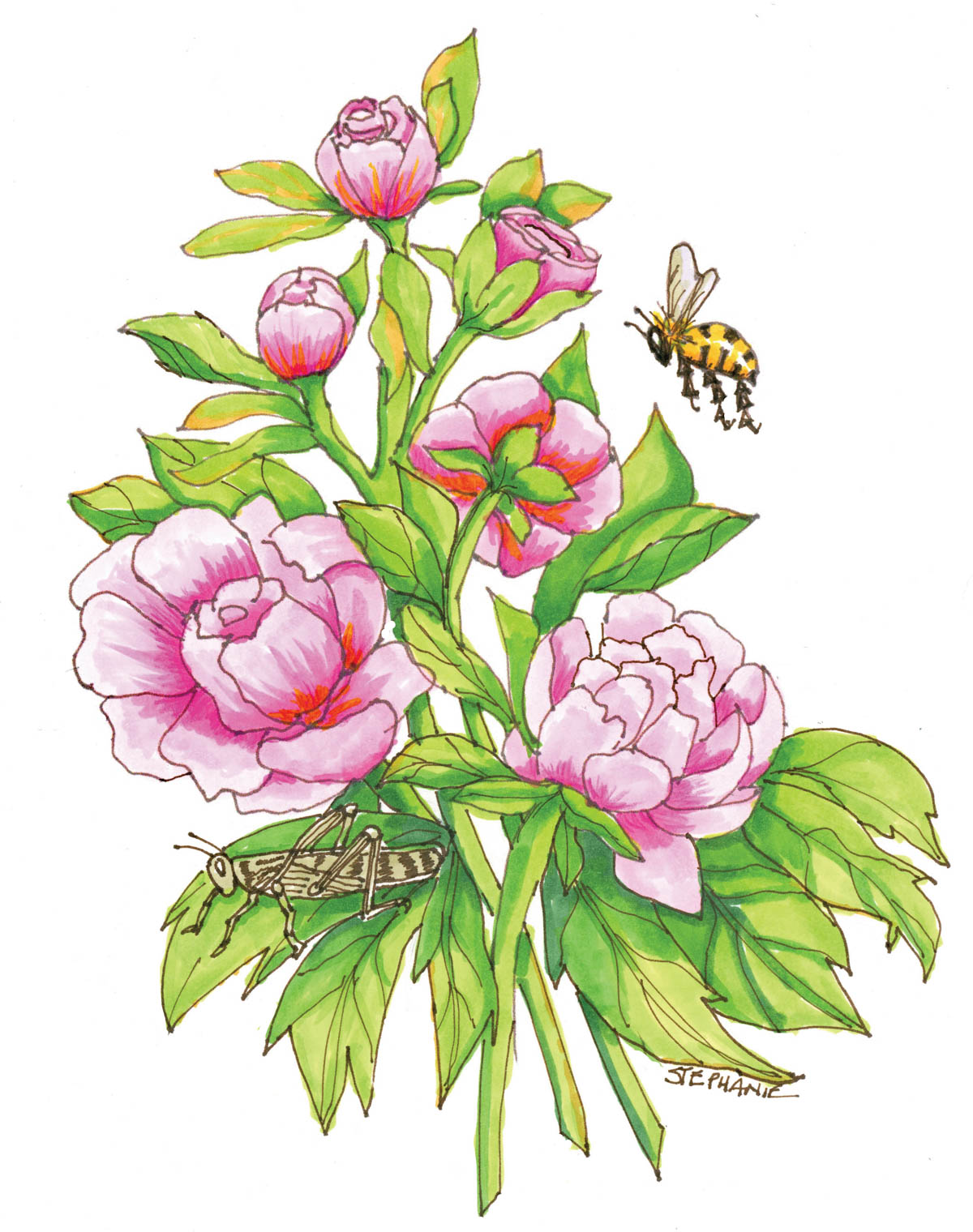
Peonies. Stephanie Sipp, artist
The Literary Gardener
By Carol Howard
The most widely read American nature poet of our era, Mary Oliver, died in January, at age 83. An heir to Emerson and Thoreau, and an admirer of the Persian mystic Rumi, Oliver spent four decades walking through the forests and wetlands of Provincetown, MA. These woods were as much a home to her as the house she shared with her partner of many years, photographer Molly Malone Cook. She once told the story of having found herself in the woods without a pen and later adopted the precaution of squirreling away pencils in the trees, the way that others of us stash pairs of reading glasses around the house.
The natural landscape of Cape Cod was not only home but also the sanctuary in which Oliver observed the divine in nature. Her contemplation of animal and plant life, in the wild and in the garden, contributed to her prophetic voice. She was especially skilled at asking important questions about purpose that guide readers toward a meditative state.
Oliver’s most famous question about purpose appears in her short poem “The Summer Day”: “Tell me, what is it you plan to do with your one wild and precious life?” Out of context, as it often appears—on t-shirts and coffee mugs—the question might seem a call to action. In the context of the poem, though, the question actually comes after the speaker has confessed that she spends her day “stroll[ing] through the fields,” “idle” but “attentive.” Anticipating the reader’s disapproval of her not doing something more obviously useful, she asks, a bit defensively, “tell me, what else should I have done?”
The question seems to be at the core of contemporary American life: must we always be filling our lives with accomplishments? As it happens, Oliver’s implication here is not really all that modern, for the poem cleverly revisits the same tension between action and contemplation that Wordsworth had evoked in his own poem “Expostulation and Reply” two centuries earlier. Like her English Romantic forebear, Oliver shows us how to step away from the urgent business of the day, how to be fully present in the natural world and grateful for the sublime in nature.
A few lines before her now-famous question, Oliver sharpens her lens on a small creature, a grasshopper of no special merit aside from its proximity to her trained naturalist’s eye. The grasshopper “lifts her pale forearms and thoroughly washes her face.” The intimate portrait of an insect accorded individual dignity leads the speaker to consider her own worth.
For the gardeners among us, Oliver offers portraits of cultivated flowers to which she brings the same deliberate attention that she bestows upon creatures of the wild. In the poem “Peonies,” the speaker wonders: “Do you also hurry, half-dressed and barefoot, into the garden, and … fill your arms with the white and pink flowers, with … their eagerness to be wild and perfect for a moment, before they are nothing, forever?” These animate floral beauties, with their own wild, perfect and no doubt precious lives, are as preoccupied with their place in the cosmos as the poet is herself.
Carol Howard is Dean of the Faculty at Warren Wilson College.






